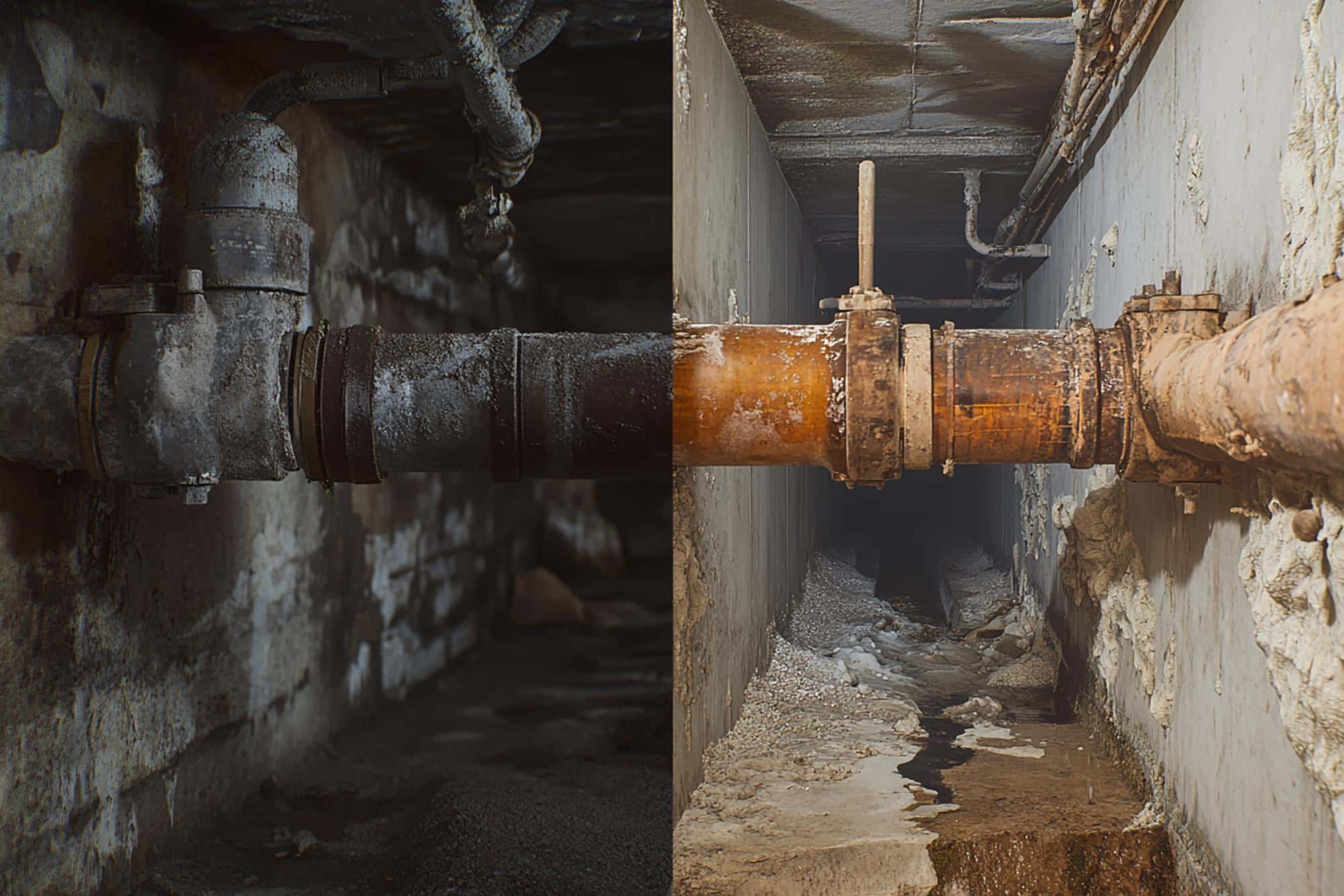Predictive Maintenance: AI in Smart Homes Saves You Money

Predictive maintenance in smart homes uses artificial intelligence to analyze data from connected devices, anticipating potential failures and enabling timely repairs, which can prevent costly damage and save homeowners up to 15% annually.
Discover how **predictive maintenance in smart homes** is revolutionizing homeownership by leveraging artificial intelligence to foresee potential issues, reduce repair costs, and ensure your home operates efficiently, saving you up to 15% each year.
The Rise of Predictive Maintenance in Smart Homes
Predictive maintenance is no longer just a concept for industrial giants; it’s rapidly becoming a reality for homeowners. By integrating AI into smart home systems, homeowners can now anticipate and address potential problems before they escalate into costly repairs.
This proactive approach not only saves money but also enhances the overall efficiency and longevity of home appliances and systems. Let’s explore how this technology is transforming the way we maintain our homes.
What is Predictive Maintenance?
Predictive maintenance uses data analysis and machine learning to monitor the condition of equipment and predict when maintenance is needed. In smart homes, this involves collecting data from various devices and using AI algorithms to identify patterns that indicate potential failures.
Unlike traditional maintenance schedules, which are based on time intervals, predictive maintenance focuses on the actual condition of the equipment, allowing for more accurate and timely interventions.
How AI Makes it Possible
AI plays a crucial role in processing the vast amounts of data generated by smart home devices. Machine learning algorithms can identify subtle anomalies and trends that humans might miss, enabling early detection of potential issues. Furthermore, AI can learn from past failures to improve its predictive accuracy over time.
- AI algorithms analyze real-time data from sensors and devices.
- Machine learning identifies patterns indicative of potential failures.
- AI adapts and improves its predictions based on historical data.

In conclusion, the integration of AI in smart homes for predictive maintenance is transforming the way we manage and care for our living spaces. By leveraging data analysis and machine learning, homeowners can proactively address potential issues, reduce repair costs, and ensure the long-term efficiency of their homes.
Key Components of a Smart Home Predictive Maintenance System
A smart home predictive maintenance system comprises several key components working together to ensure efficient and reliable operation. These components include sensors, data analytics platforms, and smart devices equipped with AI.
Understanding these components is essential for homeowners looking to implement this technology and reap its benefits. Let’s delve into the essential elements of a successful system.
Sensors: The Eyes and Ears of the System
Sensors are the foundation of any predictive maintenance system. They continuously monitor various parameters, such as temperature, humidity, vibration, and electrical current. These sensors are strategically placed throughout the home to gather data from critical appliances and systems.
For example, smart thermostats can monitor HVAC system performance, while water leak detectors can identify potential plumbing issues. The data collected by these sensors provides valuable insights into the health and performance of the home’s infrastructure.
Data Analytics Platforms: Making Sense of the Data
The data collected by sensors is fed into a data analytics platform, where AI algorithms analyze the information to identify patterns and anomalies. These platforms use machine learning techniques to predict when maintenance is needed, providing homeowners with timely alerts and recommendations.
The data analytics platform is the brain of the system, converting raw data into actionable insights that enable proactive maintenance.
- Data analytics platforms process sensor data in real-time.
- AI algorithms identify patterns and predict maintenance needs.
- Homeowners receive timely alerts and recommendations.
In summary, the key components of a smart home predictive maintenance system work in harmony to provide homeowners with a proactive approach to home maintenance. Sensors gather data, data analytics platforms process the information, and smart devices equipped with AI enable timely interventions, ensuring the long-term health and efficiency of the home.
Real-World Examples of Predictive Maintenance in Action
To truly understand the potential of predictive maintenance in smart homes, it’s helpful to look at some real-world examples where this technology is already making a difference. These examples demonstrate how AI can prevent costly repairs and improve the overall living experience.
From HVAC systems to plumbing and electrical infrastructure, let’s explore how predictive maintenance is being applied in various areas of the home.
HVAC System Monitoring
Predictive maintenance is particularly effective in monitoring HVAC systems. By analyzing data from smart thermostats and sensors, AI algorithms can detect signs of reduced efficiency, such as unusual temperature fluctuations or increased energy consumption. This allows homeowners to address issues like clogged filters or refrigerant leaks before they lead to major breakdowns.
Early detection can extend the life of the HVAC system and save on energy costs.
Plumbing Leak Detection
Water leaks can cause significant damage if left unchecked. Predictive maintenance systems use water leak detectors and flow sensors to monitor water usage patterns. AI algorithms can identify unusual spikes in water consumption, indicating a potential leak. This enables homeowners to take immediate action, preventing water damage and costly repairs.
Smart home systems can even shut off the water supply automatically to minimize damage.
Electrical System Monitoring
Electrical systems are another area where predictive maintenance can provide valuable insights. By monitoring electrical current and voltage levels, AI algorithms can detect signs of overloaded circuits or faulty wiring. This helps prevent electrical fires and other hazards, ensuring the safety of the home and its occupants.
- HVAC systems: Detect efficiency issues and prevent breakdowns.
- Plumbing: Identify water leaks and prevent water damage.
- Electrical systems: Monitor circuits and prevent electrical fires.

In conclusion, these real-world examples demonstrate the transformative potential of predictive maintenance in smart homes. By proactively monitoring and addressing potential issues, homeowners can save money, prevent damage, and enjoy a safer, more efficient living environment.
The Financial Benefits: Saving 15% Annually on Home Repairs
One of the most compelling reasons to adopt predictive maintenance in smart homes is the potential for significant cost savings. By preventing major repairs and extending the life of home appliances and systems, homeowners can save up to 15% annually on maintenance costs.
Let’s explore how these financial benefits are realized and why predictive maintenance is a smart investment.
Reduced Repair Costs
Predictive maintenance allows homeowners to address minor issues before they escalate into major problems. This significantly reduces the need for costly emergency repairs. For example, detecting and fixing a small water leak early can prevent extensive water damage, saving thousands of dollars.
Proactive maintenance is always more cost-effective than reactive repairs.
Extended Lifespan of Appliances
By ensuring that appliances and systems are operating at optimal levels, predictive maintenance can extend their lifespan. This reduces the frequency of replacements, saving homeowners a significant amount of money over time. For example, maintaining an HVAC system properly can add years to its lifespan.
Regular maintenance also improves energy efficiency, further reducing costs.
Improved Energy Efficiency
Predictive maintenance helps optimize energy consumption by identifying and addressing inefficiencies. For example, detecting a clogged air filter in an HVAC system can improve airflow and reduce energy usage. Similarly, identifying and fixing leaky pipes can prevent water waste and lower water bills.
- Reduced repair costs by addressing minor issues early.
- Extended lifespan of appliances through regular maintenance.
- Improved energy efficiency by optimizing consumption.
In summary, the financial benefits of predictive maintenance in smart homes are substantial. By reducing repair costs, extending the lifespan of appliances, and improving energy efficiency, homeowners can save up to 15% annually on maintenance costs, making it a worthwhile investment.
Implementing Predictive Maintenance in Your Smart Home
Implementing predictive maintenance in your smart home may seem daunting, but it can be a straightforward process with the right approach. This section provides a step-by-step guide to help you get started and maximize the benefits of this technology.
From selecting the right devices to setting up the system and monitoring its performance, let’s explore the key steps to successful implementation.
Step 1: Assess Your Home’s Needs
The first step is to assess your home’s needs and identify the areas where predictive maintenance can provide the most value. Consider the age and condition of your appliances and systems, as well as any common issues that you’ve experienced in the past. Prioritize the areas that are most critical to your home’s operation, such as HVAC, plumbing, and electrical systems.
This assessment will help you determine which sensors and devices to invest in.
Step 2: Choose the Right Devices and Sensors
Select smart devices and sensors that are compatible with your existing smart home ecosystem. Look for devices that offer real-time data monitoring and integration with data analytics platforms. Common devices include smart thermostats, water leak detectors, and energy monitors. Ensure that the devices are easy to install and use.
Compatibility and ease of use are key factors to consider.
Step 3: Set Up and Configure the System
Follow the manufacturer’s instructions to install and configure the smart devices and sensors. Connect the devices to your home’s Wi-Fi network and integrate them with a data analytics platform. Set up alerts and notifications to receive timely warnings about potential issues. Monitor the system’s performance regularly to ensure that it is working effectively.
- Assess your home’s needs and prioritize critical areas.
- Choose compatible devices and sensors.
- Set up and configure the system with alerts and notifications.
In conclusion, implementing predictive maintenance in your smart home involves assessing your needs, choosing the right devices, and setting up the system. By following these steps, you can proactively protect your home, reduce repair costs, and enjoy a more efficient living environment.
The Future of Smart Homes: Predictive Maintenance and Beyond
The future of smart homes is inextricably linked to predictive maintenance and other advanced technologies that enhance the living experience. As AI and machine learning continue to evolve, smart homes will become even more proactive and efficient in managing and maintaining themselves.
Let’s explore some of the emerging trends and possibilities that lie ahead for smart homes.
Integration with Renewable Energy Sources
Smart homes are increasingly integrating with renewable energy sources, such as solar panels and wind turbines. Predictive maintenance can optimize the performance of these systems by monitoring energy production and consumption patterns. AI algorithms can predict when maintenance is needed to ensure that the renewable energy systems are operating at peak efficiency.
This integration can further reduce energy costs and environmental impact.
Enhanced Security and Safety
Predictive maintenance can also enhance the security and safety of smart homes. By monitoring security systems and sensors, AI algorithms can detect anomalies that may indicate a potential security breach. This allows homeowners to take proactive measures to protect their homes and families.
Smart homes will become even more secure and resilient to threats.
Personalized Comfort and Convenience
The integration of predictive maintenance with other smart home technologies will lead to even greater levels of personalized comfort and convenience. AI algorithms can learn the preferences and habits of the occupants, adjusting settings automatically to optimize comfort and energy efficiency. For example, the system can adjust the temperature and lighting based on the occupants’ schedules and weather conditions.
- Integration with renewable energy sources for optimized performance.
- Enhanced security and safety through anomaly detection.
- Personalized comfort and convenience based on user preferences.
In summary, the future of smart homes is bright, with predictive maintenance playing a central role in enhancing efficiency, security, and comfort. As technology advances, smart homes will become even more intelligent and proactive in meeting the needs of their occupants.
| Key Point | Brief Description |
|---|---|
| 💡 AI Integration | AI analyzes smart home data to predict failures. |
| 💰 Cost Savings | Predictive maintenance saves up to 15% annually. |
| 🛠️ Proactive Repairs | Addressing issues early prevents major damage. |
| 🔒 Enhanced Security | AI detects anomalies for improved home security. |
FAQ
▼
Predictive maintenance uses AI to analyze smart home device data, predicting potential failures and enabling timely repairs, saving homeowners money.
▼
Homeowners can save up to 15% annually on repair costs by addressing minor issues before they escalate into major problems.
▼
Essential devices include smart thermostats, water leak detectors, and energy monitors, all integrated with a data analytics platform.
▼
AI algorithms monitor security systems, detecting anomalies that may indicate breaches, allowing for proactive security measures and timely responses.
▼
The future includes integration with renewable energy, enhanced security, personalized comfort, and proactive management of smart home systems for greater efficiency.
Conclusion
In conclusion, **predictive maintenance in smart homes** offers a proactive approach to homeownership that can save time, money, and stress. By leveraging the power of AI and smart technology, homeowners can protect their investments, extend the life of their appliances, and enjoy a safer, more efficient living environment.





